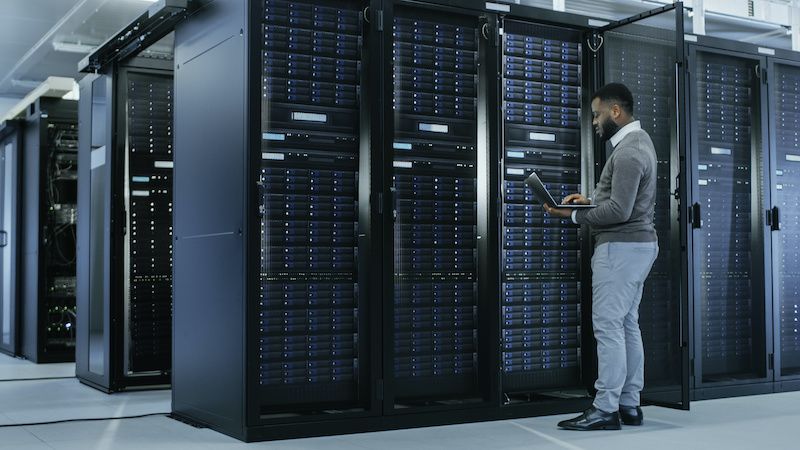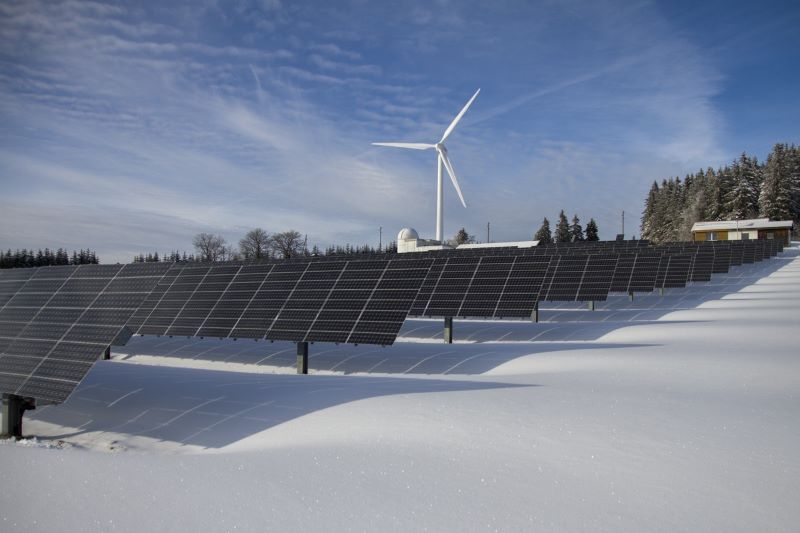
DC (direct current) powered application delivery: an energy-saving game changer for the data center industry?
Application Management Published on •5 mins Last updatedThe rapid advent of big data, cloud computing, and cloud providers like Amazon, Google, and Microsoft has led to the growth and expansion of many large-scale data centers during the past decade – resulting in substantial energy consumption. But, is a boom in energy-efficient data centers just around the corner?
Today, data centers are the backbone of the internet – processing and storing the world’s digital information, the availability of which is of crucial importance to data center customers. Therefore, data centers must ensure that this valuable resource is accessible to their customers around the clock in a reliable manner. To facilitate that, a robust electrical power supply and distribution system within a data center are of utmost importance.
DC in your data center: now is the time
Data centers use power in two ways:
- to run the IT equipment that they house (i.e. servers which execute the digital transactions) and,
- to keep servers cool enough to function reliably (because servers emit heat when they are working, data centers need the power)
Over time, with energy prices increasing, data centers are being forced to re-evaluate their energy consumption and increase their electrical efficiency to remain profitable. Besides, with new environmental legislation coming into effect, they are also under increasing pressure to reduce the environmental impact of their operations. To keep up with the emerging convergence of business mandates and external pressure, modern data centers are now exploring new technologies and design principles to move towards the utilization of renewable power resources – like wind and solar energy for operating their data centers. Accordingly, many are turning away from alternating current (AC) options to using energy-saving direct current (DC) power sources in order to maximize the opportunity of reducing power consumption – and associated costs.
Is DC power better for your data center?
Although we live in an AC-dominated world, DC is a lot more efficient because its use minimizes the number of conversions from AC to DC, reducing the amount of energy lost and therefore, saving money for data centers. This also eliminates the need to use rectifiers and transformers, resulting in lower installation costs in data centers.
A DC infrastructure takes up less space than AC, leaving more floor space available for server racks and cooling equipment. This is important as many data centers are constrained by their ability to cool equipment that they already have. Moreover, the operating efficiency of DC is also better than AC due to the lower losses and reduced cooling load. Energy storage devices can be placed directly on the DC bus, and loads can be added as needed without having to re-engineer the power network. This adds up to faster installation, and faster upgrades as a data center facility grows.
Along with efficiency, cost-effectiveness, and speedy installation, DC also offers benefits in terms of power quality and system reliability. The design of a DC power system is simpler. It has fewer components and thus, fewer points of failure than the AC alternative. It also eliminates harmonics and other problems associated with AC like, cooling and adapter concerns. Finally, using DC systems is safe. With modern power electronics, it is easy to limit fault current through design in DC systems, which reduces the overall risk – to personnel and equipment.
Downsides of deploying DC in data centers
Although it has been recognized that using DC power distribution is more efficient and reliable, the limited selection of DC power supplies for servers and the lack of equipment such as air conditioning units, fire protection gear and building controls that run on DC have acted as major roadblocks to its adoption in data centers. Additionally, there is also a lack of standards – for example, for arc flash and grounding. Therefore, each system must be engineered individually which adds substantially to the cost of choosing DC. But perhaps, the greatest challenge is simply the lack of experience among data center owners, operators, and contractors.
5G deployment: the key driver for DC power systems?
Market research firm Frost & Sullivan’s recent analysis anticipates that the increasing implementation of 4G and 5G networks across the world will lead to steady growth in demand for DC power systems. As a result, the market revenue for DC power systems is estimated to hit $5.5 billion in 2025 from $4.2 billion in 2019, with units increasing from 895,000 to 1.04 million.
While telcos have used 48V DC systems for decades with tremendous results, going forward, the emergence of 5G will be a major market driver for DC power system deployments. This is due to the increased power and processing requirements of 5G infrastructure which will create the need for highly efficient and reliable power systems that can tolerate heavy loads. The modular and highly efficient DC power systems can perfectly fulfill this need of the 5G technology. DC systems strengthen telecom vendors with the most optimized power uptime that they require to provide their customers with uninterrupted 24/7 services. Therefore, the ask for DC power is likely to grow stronger in the telecom industry compared to that of the AC power systems.
The future of DC in data centers
Clearly, the battle of currents is not new. Likewise, the AC/DC gymnastics in data centers has been continuing for years now. But as data center users and cloud service providers seek to green their operations, the future of DC power looks increasingly promising. A product of sustainable energy sources such as photovoltaic solar panels, wind energy, fuel cells, and microgrids, DC systems make it easy to integrate on-site energy sources like solar or fuel cells in a data center. Energy storage devices that produce DC power are also quite easy to install.

According to a recent ABB article, although the global installed base of DC data centers is a mere 10MW right now, the business case for DC remains quite convincing. But for DC power distribution to become a viable choice, first, effective training sessions should be conducted to deal with basic design questions like where to put the AC-to-DC converter and how to engineer an energy storage device on the DC bus that delivers the same performance as a UPS. This will increase the familiarity with DC systems and minimize the resistance to change in the entire data center market. And potentially, if even one hyperscale data center operator makes a substantial investment in DC, it could create demand overnight that would then drive the development of the standards and equipment needed to take DC power supply to the next level.
Overall, DC power solutions can be a great way for data centers to save money and energy. By collaborating with the right business partner, data center owners and operators can come up with carefully designed plans to take the best advantage of the benefits that DC power has to offer.
We can help
At Loadbalancer.org, we build load balancing appliances that are well-equipped to support DC-powered data centers. If you think DC power may be an option in your existing data center or a future data center project, we have load balancing solutions to support your requirements – contact us to learn more.
